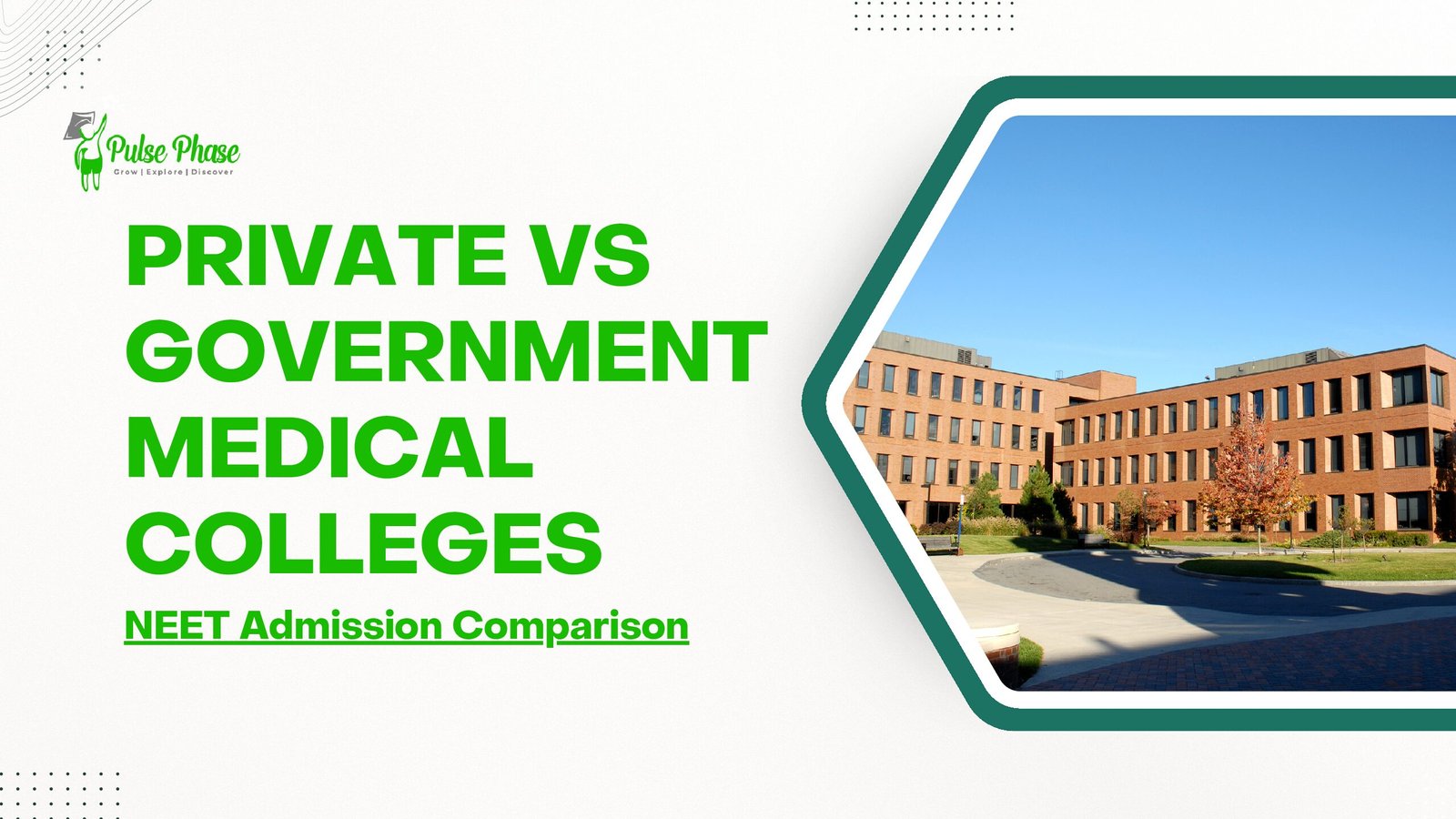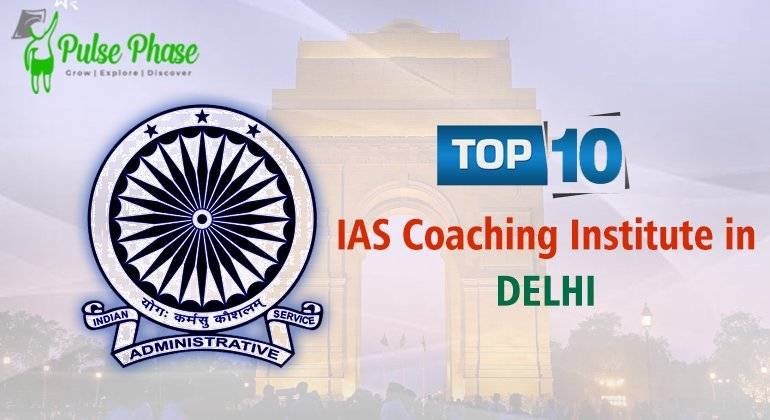For thousands of aspiring doctors in India, the doors to admission to this noble profession are unlocked by NEET every year. Still, one of the toughest decisions for many students and parents after the exam remains: Private vs Government Colleges? The cost, cut-offs, and long-term value may vary a lot.
In this comprehensive guide, we will be comparing Private vs Government Colleges on various parameters like NEET scores, fee structure, management quota, ROI, and cut-offs.
MBBS Seats in Private vs Government Colleges
As of 2025, India offers more than 1.1 lakh MBBS seats. These are divided roughly equally between government and private institutions.
| College Type | Approximate Seats |
| Government Colleges | 55,000+ |
| Private Colleges | 50,000+ |
| Deemed Universities | 5,000+ |
Candidates consider Government colleges due to their lower fees and better return on investment, while Private Colleges cater to students who couldn’t get enrolled in government colleges.
NEET Cut off for Government Colleges
For admitted taxpayers, accompanied by the prestige of obtaining a medical school NEET score forms the admission basis. In 2024, the cut-off scores for the various states for the general category would stay in the range from 610 to 680 for AIQ (15%).
As an example:
- For open-category students in Maharashtra and Delhi, the top government colleges required 640- 680+ marks.
- Students from Odisha or Assam may consider the cut-off somewhat lower at 600-620 for the same category.
- Reservations based on categories and state domicile also play a role in determining the cut-offs under the 85% State Quota, which tends to be more generous for SC/ST/OBC candidates.
MBBS Fee Structure: Private vs Government Colleges
| College Type | Estimated Fee |
| Government college | ₹1-6 lakhs |
| Private College | ₹40-80 lakhs |
| Deemed Universities | ₹80 lakhs-₹1.25 cr. |
Government colleges
- 5.5 years total fee: Min: ₹1 lakh – Max: ₹6 lakhs.
- The entire course tuition usually ranges from ₹20,000 to ₹1,00,000 for one year.
- Subsidized education that meets the needs of many is found in government-facilitated colleges.
Private colleges
- For completion of the course, the amount charged can be as low as ₹40 lakhs and at most can be ₹1 crore.
- For the offers limited to students,₹8 lakhs, and the most charged will be ₹25 lakhs.
- The completion rates are high since the course fees can be as high as ₹1 crore and at the least can be ₹40 lakhs.
- In metropolises, the government facilitates that deemed universities’ educational charges are quite high when compared.
Deemed Universities
- Estimated figures for acquiring either of the universities are: ₹80 lakhs -₹1.25 crores.
- The approximate values in Manipal, DY Patil, and SRM range from ₹80 lakhs, from the basis on deemed universities, it is ranging to ₹1.25 crores.
Private Medical College Cut-Offs for NEET 2025
In general, private medical schools have a lower NEET score than their public counterparts.
- Tier-1 private colleges: 450–550 marks
- Mid-tier colleges: 400–450 marks
- Lower-tier or rural private colleges: 300–400 marks
The exact cut-off, however, varies along the admission policy based on the state and its school, with the students domiciled in the state given priority under state quotas. For example, Karnataka and Tamil Nadu have established accredited private facilities with a relatively higher merit threshold.
Management Quota In NEET MBBS Admission
A certain number of MBBS seats in private institutions are set aside for the management quota. The cut-off and qualification criteria remain the NEET, but with an easier score to achieve.
Key Features:
- 50th percentile in NEET.
- Cut-off marks under management quota: 250-400+
- Fee range: ₹70 lakh to ₹1.25 crore
Some colleges also offer NRI quota seats, with USD-based fee structures.
| Admission Type | NEET Cut-Off (Approx) | Fees Range |
| Government Quota | 610-680+ | ₹1-6 lakhs |
| Private General | 450-550 | ₹50-₹80 lakhs |
| Management Quota | 250-400 | ₹80 lakhs- ₹1.25 crores. |
Is MBBS Worth the Investment? Return on Investment (ROI)
One of the major concerns for students choosing a private college is: Will I earn back what I spend? Let’s compare the ROI.
Government College ROI
- Investment range: ₹1-5 lakh
- Internship stipend range: ₹15,000-25,000
- Post-MBBS salary in INR: ₹8-15 lakh, depending on location and specialty
- Mean recovery time in years: 1-2
Private College ROI
- Investment range: ₹60 lakh – ₹1 crore
- Internship stipend range: ₹10,000 to 15,000
- Post-MBBS salary according to medical student or body: Equivalent to government graduates
- Recovery time according to an expert without PG: 8-10 years (can be stretched further during this year)
Thus, ROI is significantly better in government institutions. The gap may reduce if the private graduate clears NEET-PG and lands a good specialization, but the initial burden is high.
Comparing Learning and Campus Experience: Private vs Government Colleges
| Parameter | Government College | Private College |
| Teaching quality | Strong faculty, experience varies | Depends on the college tier |
| Patient Exposure | High due to heavy OPD loads | Often limited unless tied to large hospitals |
| Infrastructure | Functional but maybe outdated | Often modern and well-equipped |
| Peer Group | High merit competition | Diverse mix due to different quotas |
| Hostel/living | Affordable, basic | Comfortable but expensive |
Future Trends in NEET MBBS Admissions (2025 and beyond)
- Number of government vacancies keeps rising: this was seen across the board with new colleges added, leading to an increased number of opportunities.
- Admissions getting tougher: This was particularly noticed because of the increase in competition and better coaching facilities.
- Private admission fees are skyrocketing, not just in the top tier but also in metropolitan colleges at the moment
- Bond services in government colleges: Many require 1–5 years of rural service post-MBBS.
Final Thoughts: Private vs Government Colleges: Which is better?
Choose a Government College if:
- With some hard work and dedication, you can score 600+ in the NEET exams.
- You prioritize financial controllability & ROI.
- You prefer good teaching and clinical practice.
Opt for a Private College if:
- Even though you fall at less than 500 marks, it hasn‘t lowered your passion for wanting to join the medical program despite your other goals.
- You have a plan and some spending ability when it comes to your career.
- You want to give NEET-PG a shot or maybe go practice outside the country.
It should always be remembered that MBBS is not everything; whether or not you go through a private or government college, everything depends on it, including your willingness, the aspect of practice, and skills in operation.
FAQs
Q1. What is the average MBBS fee in private medical colleges?
A: It ranges from ₹8–25 lakh annually, totaling ₹40 lakh to over ₹1 crore.
Q2. Can I get an MBBS seat with 300 marks in NEET?
A: Yes, in some private colleges under the management quota, but expect higher fees.
Q3. Are deemed universities better than private state colleges?
A: Deemed universities often have better infrastructure, but fees are very high.
Q4. Is NEET qualification mandatory for private or management quota admissions?
A: Yes. Even management or NRI quotas require you to qualify for NEET.
Q5. How long does it take to recover the cost of a private MBBS?
A: It may take 8–10 years after graduation, depending on your specialization and career path.
READ MORE ABOUT:




